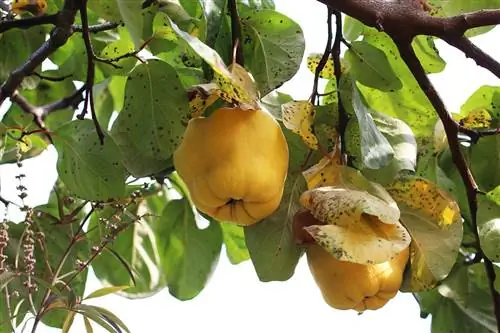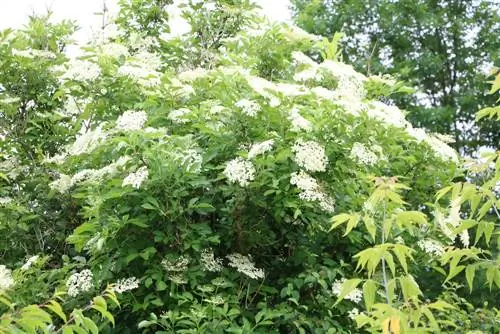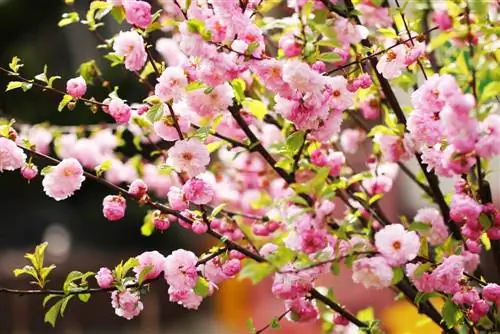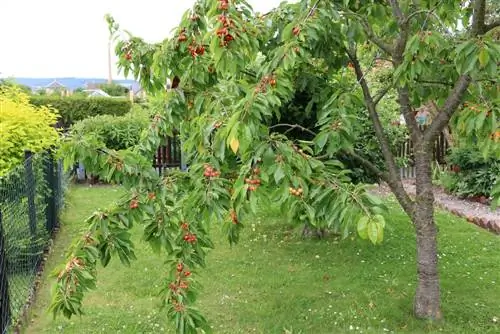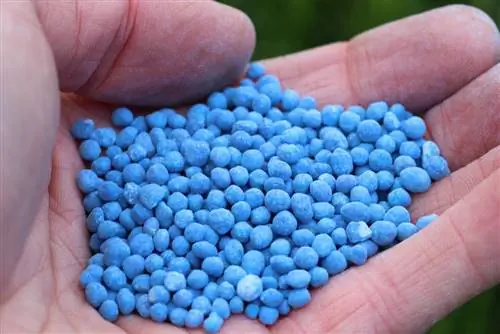- Author admin [email protected].
- Public 2024-01-15 11:54.
- Last modified 2025-01-24 12:45.
The almond tree is one of the most beautiful signs of spring that Mother Nature has to offer. The magic of the lavish, pink and white blossoms far outweighs the importance of a Prunus dulcis as a supplier of sweet almonds. In the local regions, hobby gardeners plant the stone fruit plant primarily for decoration in beds and on the balcony. The professional care of this natural beauty requires a certain degree of care, which also applies to cutting. The following instructions explain how you can master cultivation excellently.
Profile
- Plant family of the rose family (Rosaceae)
- Stone fruit subfamily
- Name of the species: Almond tree (Prunus dulcis)
- Asian tree or shrub
- Growth height from 2 to 6 meters
- deciduous and hardy down to -15 °C
- pink-white flowers in March and April before the leaves emerge
- lanceolate leaves, 6-9 cm long
- tasty stone fruits in July and August
It is important to note that one of the three varieties of the almond tree has the Latin name Prunus dulcis Var. amara, produces poisonous bitter almonds.
Location and soil conditions
All care measures will only be successful if you assign the almond tree an adequate location. The following modalities create the perfect conditions for growth, flowering and fruiting:
- sunny location, warm and sheltered from the wind
- humous, permeable and loose soil
- neutral to slightly calcareous
- preferably fresh and moist and definitely not dry
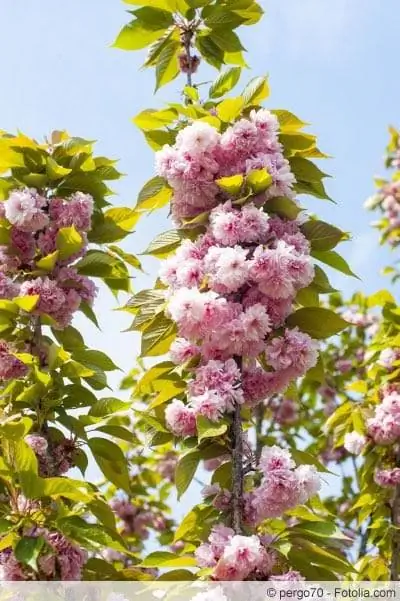
Since almond trees in planters on balconies and terraces create a magical ambience, creative gardeners often favor this form of cultivation. High-quality compost-based potting soil with the addition of perlite or expanded clay is recommended as a substrate.
Pouring
The extent of the water supply depends on the weather conditions and the chosen cultivation variant. In the limited volume of a planter, the roots of an almond tree rely on additional water more often than in the open space of the bed soil. How to water Prunus dulcis appropriately:
- Water young plants frequently and abundantly
- water adult almond trees twice a week during dry summer periods
- Always water thoroughly, with the water hose running for half an hour
- in the bucket make sure that the moisture penetrates to the bottom
Tip:
The water is generally administered to almond trees directly to the roots. Because sprinkling flowers and leaves promotes the spread of fungal infections and rot.
Fertilize
In terms of nutrient requirements, a Prunus dulcis fluctuates between a moderate to high level. This is accompanied by regular administration of fertilizer whose composition meets the specific requirements of fruit trees. Since the trend in hobby gardening continues to be towards organic fertilizers, compost is at the top of the recommendation list. In addition, specialist retailers have a wide range of high-quality preparations available.
- From the end of February/beginning of March, ripen compost with horn shavings should be worked into the soil every 14 days
- Alternatively, apply a slow-release fertilizer in early spring and June
- Administer liquid fertilizer every 14-21 days in the planter throughout the growing season
- optionally use liquid compost, guano sticks or worm tea
However you cover the nutritional needs of an almond tree; Fertilization will no longer be carried out from September at the latest. From this point on, the specimens in the open field in particular have to prepare for the coming winter. If a new shoot sprouts, it will no longer ripen in time and freeze. At this point, the entire stone fruit plant is vulnerable to frost damage, diseases and pests.
Tip:
A noble ornamental tree, such as Prunus dulcis, is particularly decorative with a mulch layer made of high-quality pine bark. At the same time, the representative decorative ceiling keeps the soil warm and moist, while weeds are reliably suppressed.
Overwintering in the bed
Planted in mild wine-growing regions, overwintering outdoors is not a hurdle to successful care. If the bed is in an exposed, rough location, the almond tree should be in the protective company of other trees. Since the crown sheds all of its leaves, there is no danger of frosty temperatures in winter. This only becomes apparent with the young shoots in very early spring, when delayed ground frosts wreak havoc. In this case, protect the buds and flowers overnight with a fleece or film. Alternatively, a valerian spray is useful, which is sprayed on the tree in the late afternoon before a frosty night in a 3 percent concentration. At least up to temperatures of -3 °C, the flowers and fruit sets are spared. Valerian concentrate can be purchased cheaply in any pharmacy.
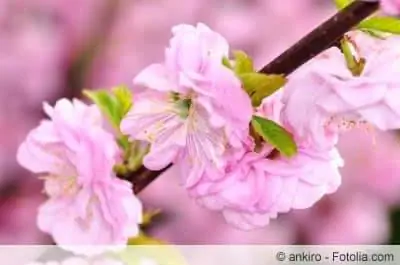
Overwintering in a bucket
Prunus dulcis in a planter should not spend the cold season outdoors. The risk of the unprotected root ball freezing through is too great.
- Overwinter potted plants in bright areas at 5 °C
- keep the substrate slightly moist and let it dry occasionally
- check regularly for pest infestation
To prevent premature sprouting, the tree should not be exposed to temperatures above 10 °C during the winter.
Cutting
Regular maintenance pruning is essential in the proper care of an almond tree. Since it is a spring bloomer, the only time for pruning is after flowering. Otherwise, you will deprive the charming ornamental tree of most of its buds. How to do it right:
- choose an overcast, dry day in May or June
- sharpen and disinfect the cutting tool
- first clear out all dead wood
- cut off diseased, withered and criss-crossing branches at the base
- shorten the remaining shoots by half to two thirds
- Make each cut at a slight angle, just above a sleeping eye
- repeatedly take a few steps back to maintain the juice balance
The older the ornamental tree, the more courageous you should be. A careful 'à la Coiffeur' cut does not encourage a Prunus dulcis to branch out lushly nearly as much as a radical approach. Only a few buds should be left on well-established trees. Although this circumstance limits the visual appearance a little at first, it paves the way for the development of numerous, flowering shoots with an opulent flower flora.
Almond trees are usually hybrids grafted onto a wild rootstock. Unwanted wild shoots sprout from this base throughout the entire growing season. These can also be removed during the regular maintenance cut. Since these branches tend to sprout again from the smallest remnants, they are torn off with a jerk.
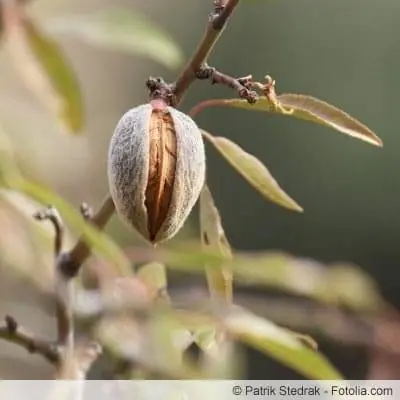
Conclusion of the editors
An almond tree brings the spring-like lightness of pink and white flower clouds into every garden, which announce the most beautiful time of the year in an inimitable way. Caring for and cutting this enchanting stone fruit plant is not nearly as complicated as it might first seem. If you make the right choice for the location in a sunny, warm, sheltered location, you are on the right track. Watering and fertilizing do not pose any outstanding requirements. You shouldn't be afraid of a successful cut either, because following these instructions you won't go wrong again.
What you should know about the almond tree in brief
The almond tree has nothing to do with the almonds we love. In addition, it is not originally a single-stemmed tree, but rather a multi-shoot shrub. However, it is grown as an ornamental stem because it simply looks better. The almond tree is ideal for individual placement in front gardens, borders and in larger planters on balconies and terraces.
Profile
- Species/Family: Woody plant, belongs to the rose family (Rosaceae)
- Flowering period: April to May with cup-shaped or double pink flowers
- Foliage: summer green; rich green egg-shaped leaves; beautiful autumn colors
- Growth: bushy growth with diagonally upright shoots, hardly any branches
- Height: as a standard tree approx. 2 cm high, grows more in width than in height
- Location: sunny to partially shaded, with sunny being preferred
- Soil: deep, permeable, nutrient and humus-rich, rather moist soil
- Partner: Solitaire. Grown as a standard tree and planted under ground cover
- Required: Add compost in spring and organic fertilizer in May, alternatively give slow-release fertilizer in spring
- Wintering: Hardy
- Diseases: Lace drought (Monilia): See below Diseases
Special features
- is native to China
- belongs to the large genus of ornamental cherries
- can also be kept in a bucket
- Simple flowers are an important early food source for early butterflies and bumblebees - double varieties provide no nectar
- Fruits are often eaten by birds
Cut
- after flowering, cut back the shoots by half or even to 5 cm
- thin out to promote the formation of new young shoots, for more beautiful growth and to prevent Monilia disease
- Flowers will appear next year on the newly sprouted branches after pruning


